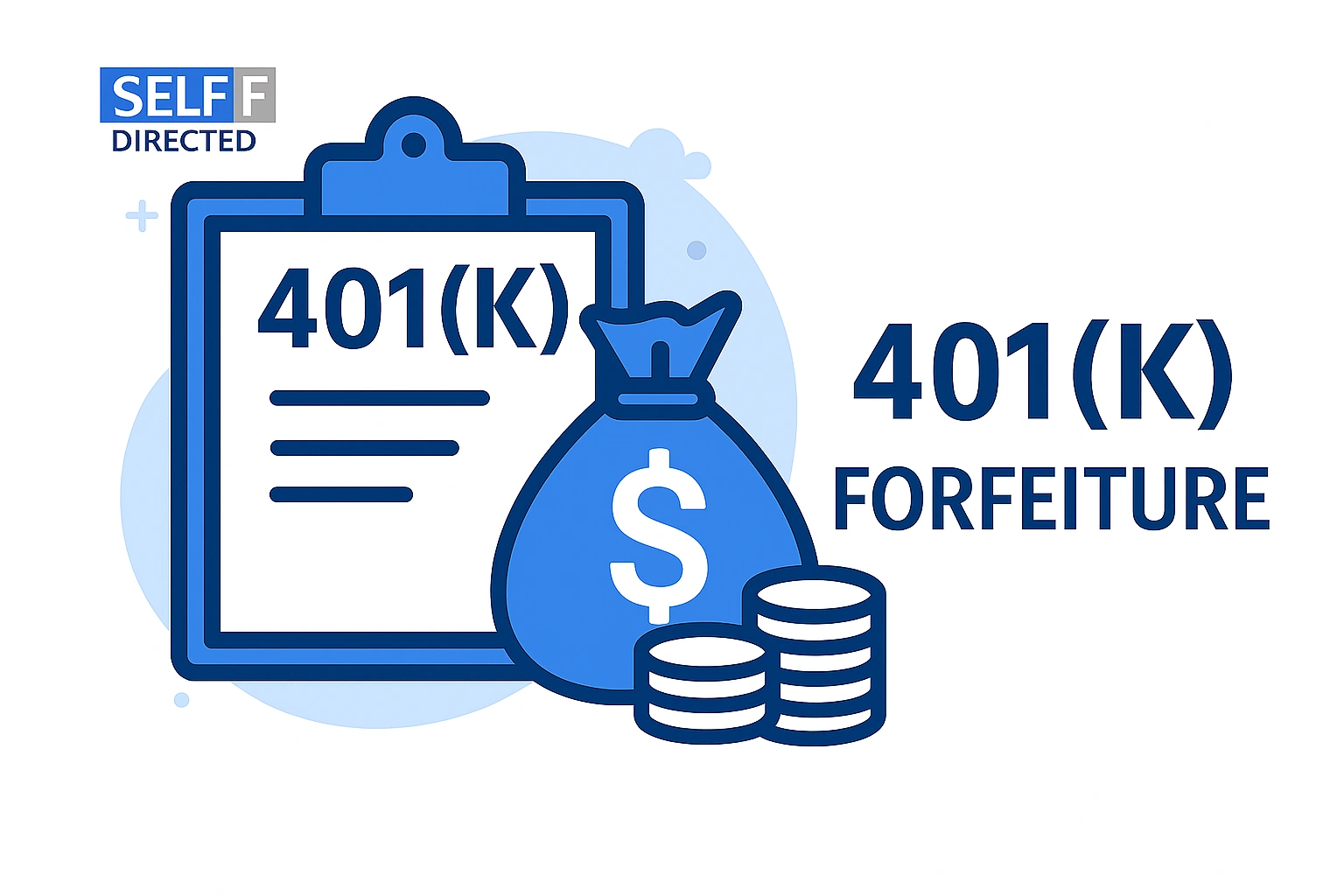
Saving for retirement with a 401(K) plan is a smart move! However, there is a topic that often confuses both employees and employers: 401(K) forfeiture. You might wonder, what does forfeiture mean? Is it something you should worry about? And how can you make sure you don’t lose your hard-earned savings?
This article is here to explain the meaning of 401(K) forfeiture in simple terms, why it happens, and how you can protect yourself from losing money. Keep reading!
What is a 401(K) Forfeiture?
Let’s begin with the fundamentals. You contribute money from your pay cheque to a 401(k) plan. Often your company matches your contributions. This may be accomplished through profit-sharing or matching contributions. However, there are usually conditions tied to that employer funding, such as a vesting timeline.
In essence, a vesting schedule is a timeframe. It specifies the amount of time you must work for the company before you “own” all of the employer contributions. The employer contributions that haven’t yet been vested are no longer yours if you depart before you are fully vested. This is where forfeitures are useful.
Unvested funds are placed in a special account known as a 401(K) forfeiture account. The money that the employee loses when they quit early is kept in this account.
Why Do Forfeitures Happen So Often?
You might think, “Why would anyone lose their money like that?” But forfeitures are quite common, and they play an important role in the way 401(K) plans are managed.
Employers use forfeiture funds to keep the retirement plan financially balanced. For example, forfeitures can help cover the administrative costs of running the plan or reduce the employer’s future contributions. Think of forfeitures as a way to recycle money within the plan instead of it just disappearing.
Forfeitures aren’t just about penalties for leaving early. They are a necessary part of how retirement plans stay sustainable for everyone involved.
What are Some of the Most Common Misconceptions About 401(k) Forfeitures?
Myth #1: All money in your 401(K) is yours immediately.
Reality: Employer contributions usually follow a vesting schedule. So, you only own them fully after a certain period.
Myth #2: If your money is forfeited, you lose it forever.
Reality: You lose the unvested employer contributions, but your own contributions and vested amounts stay safe.
Myth #3: You can get forfeited money paid out to you.
Reality: Once money is forfeited, it can’t be paid to former employees. It stays in the plan for approved uses only.
What are the Rules and Regulations for a 401(K) Forfeiture Account?
To safeguard employees and maintain equity, the IRS and the Department of Labor have stringent guidelines on forfeitures. Employers are only permitted to use forfeitures for the purposes specified by law. Typical applications include paying for administrative costs and lowering future employer contributions.
The use of these forfeiture funds has a deadline as well. They usually have to be spent within a specific time, usually by the end of the following plan year after they occur, or else they run the danger of making the plan non-compliant.
Regulations have been recommended to increase openness and ensure that forfeitures are managed appropriately. These adjustments would support the preservation of plans and the protection of employee rights.
How Employers Can Use Forfeiture Funds?
So, what happens to the money in the 401(K) forfeiture account? Employers have a few options:
- Offset Plan Expenses: Using forfeitures to cover fees keeps costs lower for everyone in the plan.
- Reduce Employer Contributions: Forfeitures can be applied to reduce how much the employer needs to put in the next year.
- Reallocate Among Participants: Some plans allow unused forfeitures to be spread out to other participants, though this is less common.
If you want to know exactly how forfeitures are handled in your plan, check your plan documents or ask your plan administrator for details.
Is There a Time Limit for Using Forfeitures?
Indeed, and this is significant. The scheme may encounter issues if forfeitures remain unutilized over an extended period. Plans must use forfeited funds within a reasonable timeframe, typically by the end of the subsequent plan year, according to IRS regulations. Failing to do so may result in penalties and even jeopardize the tax advantages.
Thus, if you are a plan sponsor, you are required to maintain accurate records and monitor your forfeiture accounts.
How Can You Avoid Losing Your Employer Contributions?
Here’s the good news: you can take steps to avoid 401(K) forfeiture altogether. The key is understanding your plan’s vesting rules and planning your career moves carefully. The more you know, the better you can protect your retirement savings.
- Review Your Vesting Schedule: Know how long you need to stay to own employer contributions fully.
- Plan Job Changes Carefully: If you’re thinking about switching jobs, consider how much you might lose if you leave before being fully vested.
- Ask Questions: Don’t hesitate to get clarity from HR or your plan provider about how your plan handles vesting and forfeitures.
At first glance, 401(k) forfeitures may seem frightening, but they are only one aspect of retirement plan management. In addition to keeping plans viable, forfeitures can potentially help participants cut costs.
It pays to be knowledgeable if you want to maximize your 401(k) and prevent forfeitures from costing you money. Be sure to follow the guidelines of your plan, ask for assistance when necessary, and comprehend your vesting timeline.
Worried about 401(k) forfeiture?
Speak with our experts to protect your retirement savings today!



